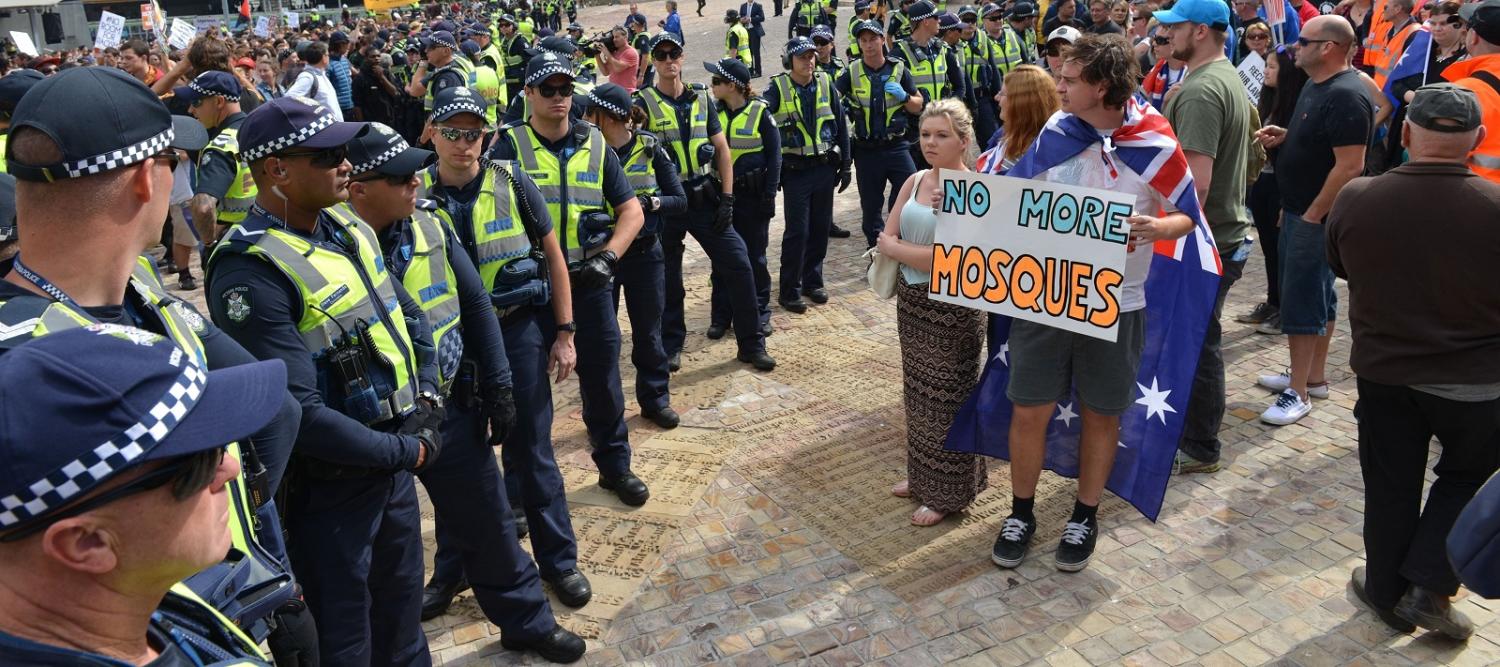In Choosing Openness Andrew Leigh makes a robust, refreshed case for free trade and investment. Both are important sources of the acceleration of global output growth over the last two decades, and of Australia’s long economic expansion since 1991. But while the case for relatively free investment and relatively free trade is convincing, it does not follow that there is an equally compelling case for free migration. As Leigh writes ‘supporters of immigration should not overstate their case'. In the debate over globalisation, the free movement of labour remains as hotly contested as it was half a century ago.
Both the Brexit vote and the election of Donald Trump had as much or more to do with hostility to migration and labour market competition as to trade or investment, an outcome replicated in the recent poll in Germany. In an insightful recent piece The Australian Financial Review's political correspondent Laura Tingle, reporting on the German election, interviewed Mark Hauptmann, an MP from Merkel's Christian Democratic Union representing a prosperous electorate. He was quite clear that the unexpectedly strong vote for the far right was ‘at least half due to the failed policy regarding immigration and the role of Islam in Germany’. As Tingle pointed out, writer David Marr reached a similar conclusion about Pauline Hanson and One Nation in his March 2017 Quarterly Essay, The White Queen. One Nation voters, he found, don’t like strangers. To my mind the biggest threat to openness is from antipathy to uncontrolled migration, rather than trade and investment.
Australia presents an interesting case in global migration attitudes. By any standards Australia accepts a very large number of migrants. On OECD numbers, 28% of the Australian population is now foreign-born. This is more than double the share in either the US or the UK. In the last two decades net migration has directly added 3.365 million migrants or the equivalent of one seventh of today’s Australian population. It is also a highly successful program. Unemployment rates among the foreign-born are only a touch above native-born unemployment rates, and the share of foreign-born with jobs pretty much matches the share of native-born with jobs (again on OECD numbers). Because of very high net migration Australia’s population is somewhat younger than comparable countries such as the US or Canada or the UK, and very much younger than most of Western Europe, China or Japan. The growth of the Australian workforce over the next several decades will be much faster than the growth of the workforce in Canada, the UK, and the US, on UN projections.
These are great advantages, but it would be quite wrong to say Australia’s experience demonstrates the success of an open door migration policy. It is highly selective, favouring intending migrants fluent in English and with skills known to be in demand in Australia. In the main migration is intended to lead to citizenship and usually does. It is true there is a good deal of compromise around the edges. New Zealanders can work in Australia without requiring approval (and Australians in New Zealand). Foreign students and backpackers can work for part of their time in Australia no matter what their qualifications. There are now guest worker programs for Pacific islanders and East Timorese. Family reunion and a refugee segment of the migration program do not depend on job skills. But by and large migration is controlled by employment criteria, and it works.
This approach supports the high wage structure Australians evidently prefer. Legal minimum wages in Australia are much higher than in the United States, and actual wages for most of the workforce are markedly higher than the minimums. Very low productivity jobs such as household servants, household cooks and drivers, nannies and so forth just don’t exist in Australia, or only in very wealthy households. It is everywhere evident that businesses and governments control costs mainly by minimising employment. At the same time, social security benefits, though means-tested, are reasonably high. The want of low paying jobs combined with reasonably high welfare payments would be a poisonous combination for any considerable low-skill, non-English speaking migration.
Are Muslims an exception to Australia’s capacity to integrate new arrivals? They are certainly a target for Senator Hanson, but I’ve little doubt their integration into Australian society is proceeding in much the same way and at much the same rate past waves of migration. Irish Catholics, Maltese, Poles, Dutch, Greeks, Italians, Chinese and Indians have all encountered the same mix of welcome and resentment. In a generation or two most have settled in, their children hardly distinguishable from other kids in their manner, accent, lifestyles and ambitions. Visiting a recent Year 12 prize-giving at Malek Fahd, one of Australia’s best Islamic schools, I saw the boys and girls were indeed on different sides of the hall, that the girls wore head scarves as part of their uniform and that the religious invocations were sung in Arabic. I also noticed the accents, manner and energy of the graduates was the same as one sees in all other schools, public and private, that the admonitions to work hard, to overcome setbacks, to seize their opportunities were offered to girls and boys alike, and that the outstanding role model with which they were presented was a mother, a doctor, who is also a school alumnus. Now second third or fourth generation, their parents often accountants, IT professionals, doctors, business people, the class of 2017 is already part of the society we have become, their Australian English fluently vernacular and their Arabic often not very good. As much as Pauline Hanson, as much as me, they are us.
Australia has done well with migration. The challenge, as Leigh remarks, is to ‘continue capturing the innovate benefits of migration and minimising the costs to civic life'.

